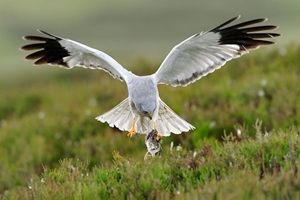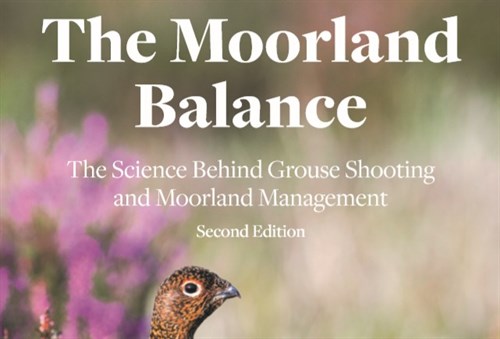 The Game & Wildlife Conservation Trust condemns crimes against wildlife, and we are committed to finding effective and practical resolutions to conflicts, such as the one between red grouse and raptors. Our work with the Langholm Moor Demonstration Project, Scotland’s Moorland Forum’s Understanding Predation project, and Defra’s hen harrier recovery plan are testament to this intent. We believe that traditional moorland management can and should be married to new approaches and techniques such as diversionary feeding and brood management to support more birds of prey, leading to a more even distribution across suitable moorland habitat.
The Game & Wildlife Conservation Trust condemns crimes against wildlife, and we are committed to finding effective and practical resolutions to conflicts, such as the one between red grouse and raptors. Our work with the Langholm Moor Demonstration Project, Scotland’s Moorland Forum’s Understanding Predation project, and Defra’s hen harrier recovery plan are testament to this intent. We believe that traditional moorland management can and should be married to new approaches and techniques such as diversionary feeding and brood management to support more birds of prey, leading to a more even distribution across suitable moorland habitat.
Most birds of prey have expanded in range and number over the last 30 years, following legal protection in 1954. The buzzard, peregrine falcon and sparrowhawk are close to their historical peak abundances, and merlin are commonly found on moorland managed by gamekeepers. This is a welcome change from the 19th Century, when the drive to increase game abundance led to intense predator control that was responsible for the disappearance of many raptors from large parts of Britain, and the 20th Century, when pesticides maintained and enhanced this suppression.
This is not the case for all raptors in all areas. For example, hen harriers are still recovering across their former range in the UK (although globally they are not threatened). Grouse moors are criticised because there is evidence that some managers illegally kill hen harriers and other species to reduce their impact on red grouse. A real conflict has developed because there is evidence that raptor predation can suppress red grouse recovery from low densities, threatening wider moorland investment and conservation, as proven by a joint research project carried out mainly on Langholm Moor in the early 1990s. We believe this fear, that livelihoods will be lost, has motivated some moor managers to kill harriers and other raptors.
Our proposals call for the restoration of these species through new adaptive management techniques to unlock conflict rather than relying on uncompromising protection measures. We feel that conservation thinking needs to widen from a single-focus issues to take a more holistic approach to species management and establish how best to deliver multiple conservation benefits through existing land uses.
Our collective objective should be to reduce the predation pressure of raptors on wildlife using the most satisfactorily humane methods available, while at the same time maintaining or indeed enhancing the community of raptors in the country as a whole. We need an adaptive approach whereby agreements are reached between landowners and government, allowing sustainable numbers of both raptors and prey to be achieved. Grants, intra-guild effects, limited culls, target predator densities and other mechanisms should be used to serve the long-term interest of raptors as well as game species and other wildlife.
The raptor/red grouse conflict is also a conflict between parties with differing land use and conservation objectives. A simple protectionist approach to the conflict is unhelpful, as it fails to recognise the role that grouse moors can play in the conservation of raptors – assuming appropriate mitigation measures to protect their socio-economic viability are in place. We view the low densities of certain raptor species on some moorland areas as a hurdle that must be overcome, as regards the acceptance of grouse moor management as a legitimate conservation tool and deliverer of public goods.
The grouse moor community needs to accept that the public’s preference is for management options that result in sustainable numbers of raptors, and they will need to be accommodated, especially as grouse densities can be supported at driven shooting densities by disease management, diversionary feeding and brood management.
Photo credit: Laurie Campbell

The Moorland Balance - eBook - only £4.99
Get the science behind grouse shooting and moorland management. Building on the success of the first edition, this new and improved version condenses thousands of pages of scientific literature into easy-to-read questions and answers. Over 200 different studies from across the scientific community are referenced in this 134-page book.
View Book >
or
Buy Now - £4.99 >
100% Secure. All Credit & Debit cards, PayPal, Apple Pay and Google Pay accepted.
